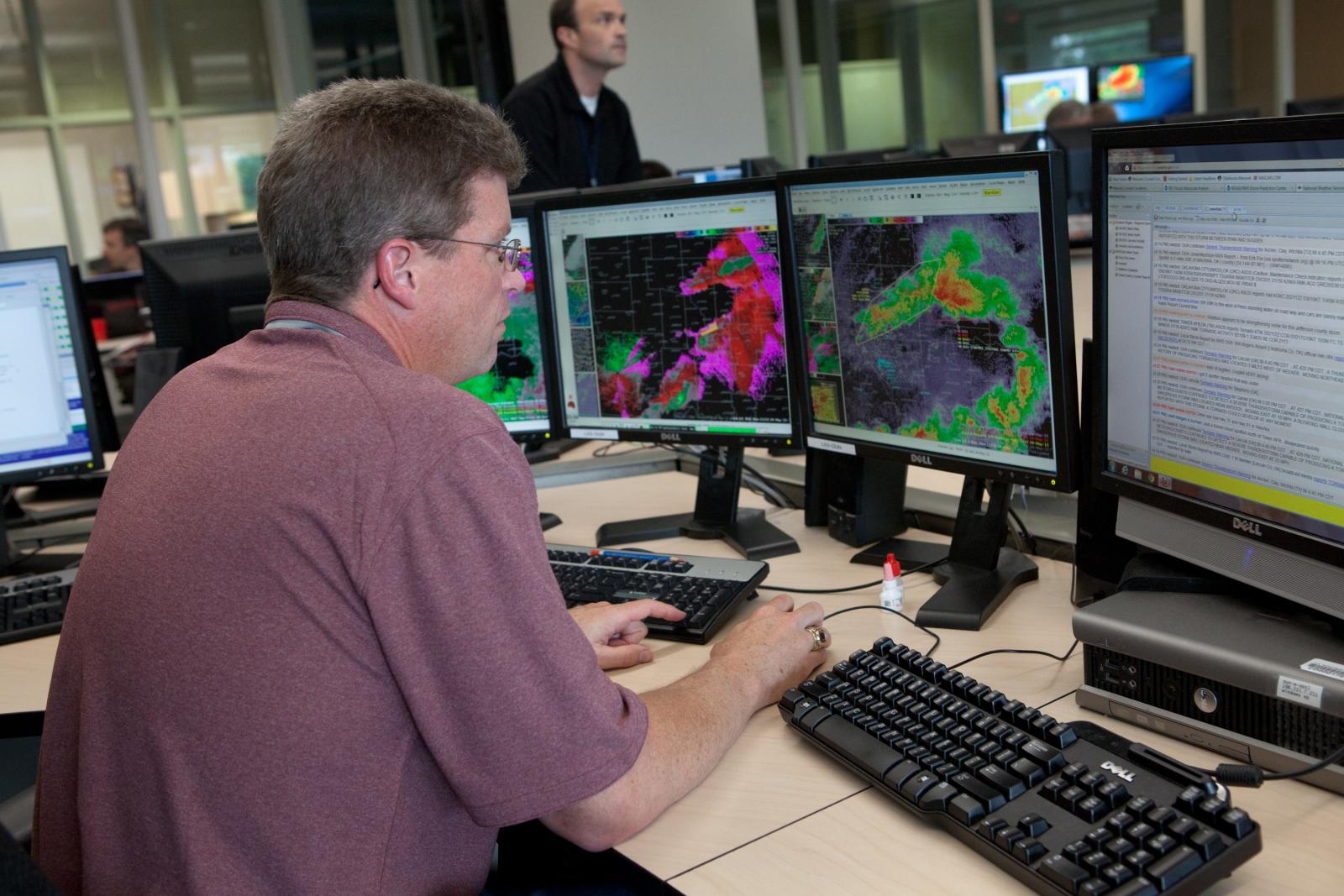When thunder roars, NOAA National Weather Service forecasters at 13 weather forecast offices are testing a newly developed radar tool to help them provide more advanced warning of threatening weather.
Across the United States, all NWS forecasters are already using a new radar capability designed to increase the detection of severe thunderstorms and tornadoes called SAILS (Supplemental Adaptive Intra-volume Low-level Scan). Installed more than a year ago on all 160 weather surveillance (WSR-88D) radars, this technology provides forecasters the ability to receive twice as many low-level views of threatening storms.
An improvement to that technology is now being tested. An enhanced feature called MESO-SAILS, Multiple Elevation Scan Option-SAILS, enables the radar to provide up to four low-level views of the storm within a five minute period. Because of this, the forecaster can see the lowest and most important portion of the storm as quickly as every 75 seconds. That means better and faster detection of hazardous weather, ultimately leading to more advanced warnings.
“Compared to traditional radar scanning, MESO-SAILS provides faster identification of tornadic circulations, increases forecaster confidence in tracking hazardous weather, and enables the forecaster to better define the storm’s future path,” said Terry Clark, director of the Radar Operations Center in Norman, Oklahoma.
The test will continue for up to one year, and the capability is expected to expand nationwide in 2016. Forecasters at the NWS office in Dodge City, Kansas, one of the test sites, reported not only did the new technology provide them with better views of thunderstorm development, but helped them refrain from issuing severe warnings on weakening storms.
This weather radar enhancement was developed by the engineers and meteorologists of the Radar Operations Center in Norman, Oklahoma, a tri-agency funded organization comprised of the Department of Commerce (National Weather Service), Department of Defense (U.S. Air Force), and Department of Transportation (Federal Aviation Administration). The ROC provides operational support and maintenance for the nation’s network of 160 weather radars.
“The NWS forecaster expertise, combined with the use of this enhanced radar technology, helps us build a Weather-Ready Nation with more precise detection and warning of hazardous weather,” Clark said.
For more information on MESO-SAILS, visit the Radar Operations Center’s website: https://www.roc.noaa.gov/WSR88D/NewRadarTechnology/NewTechDefault.aspx
 |
 |